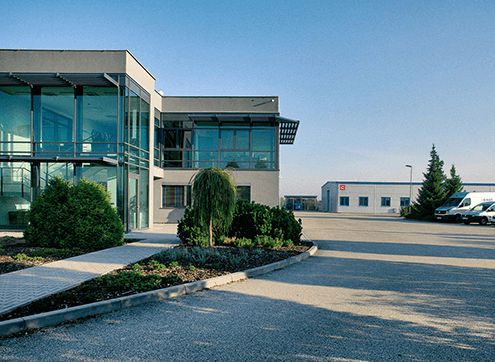
Air filters
- Hlavní
- Naše produkty
- Air filters
Naše produkty

Air filters
We arrange optimal solutions of air filtration from various vapours, liquid or solid particles for paint shops, industrial buildings, hospitals, the food industry and other areas. In the area of air filtration we have long-term experience and we cooperate with leaders in the industry and always look for new solutions leading to higher filtration efficiency and less money spent. The steadily increasing demand for quality of surface treatment, especially in the automotive industry, is also increasing demand for quality of supplied and circulating air. To select suitable air filters, it is necessary to know several entry parameters: type of filtered particles (dust, aerosol or gas), their size or concentration. Another important factor is required arrestance, which is specified by the filter class according to the ČSN EN 779 standard. Each filter class corresponds to a certain level of arrestance A for synthetic dust, or arrestance E for atmospheric dust, see the table: Filter classes. The first filter at the air inlet in paint shops in industrial buildings is a prefilter, which is intended for rough air filtration, filter classes G1 – G4. For finer filtration of inlet or circulating air, we provide filters with filter class F5 – F9. For very fine filtration of the class H10 – H14 and U15 – U17, used in medicine, microbiology, the food industry and other areas, we deliver the highly efficient filter inserts HEPA and ULPA. To capture toxic gases and solvents, we recommend using filters with activated carbon. Activated carbon can be regenerated after saturation. ### Basic criteria of air filters: ### Arrestance - Given by the standard ČSN EN 779 - For synthetic dust - arrestance A - For atmospheric dust - arrestance E - Unit of measure: [%] ### Pressure drop - Resistance against the air stream blowing through the filter - Initial pressure drop – clean filter - End pressure drop – clogged filter -> filter change needed - Unit of measure: [Pa] ### Nominal airflow rate - Air flow rate for efficient filter operation - Unit of measure: [m3/hm2] ### Dust capturing capacity - Quantity of dust which the filter is able to capture - Unit of measure: [g/m2]
NAŠE NABÍZENÉ SLUŽBY
V rámci poskytování odborných služeb a kompletního sortimentu produktů se zaměřujeme i na zajištění podpůrných aktivit, které zákazníkům nabízíme vždy v nejlepší kvalitě.

